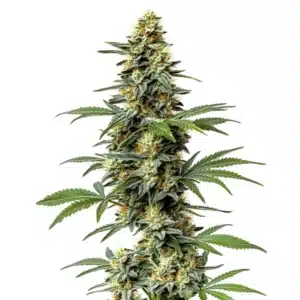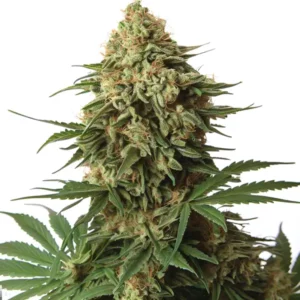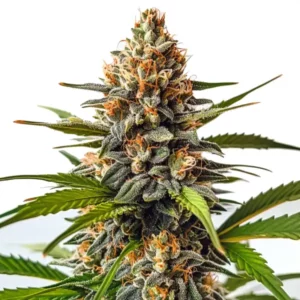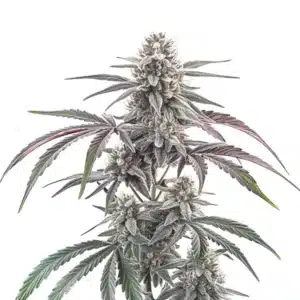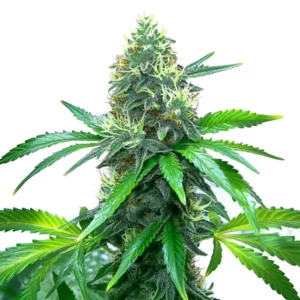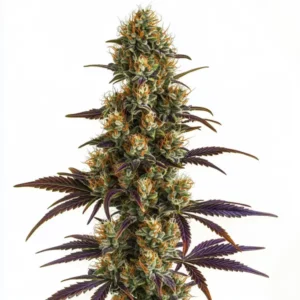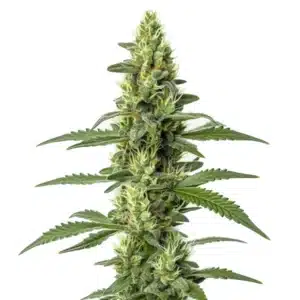
Using Biofertilizers in Cannabis Grows
When it comes to cannabis cultivation, using biofertilizers in cannabis grows can be a game-changer. These natural fertilizers not only enhance the growth of your plants but also promote a healthier ecosystem. For both beginners and seasoned growers, organic biofertilizers for cannabis cultivation offer a sustainable way to achieve quality yields.
Biofertilizers consist of living microorganisms that enrich the soil with essential nutrients. Unlike chemical fertilizers, they provide a slower release of nutrients, ensuring that your cannabis plants get what they need over time. This gradual nutrient release leads to more robust growth and healthier plants.
Recommended Strains
60 Day Wonder
|
|
THC | 18% - 20% (Medium) |
|
|
Type | Feminized |
|
|
Yield | Medium |
|
|
Phenotype | 90% Indica / 10% Sativa |
9 Pound Hammer
|
|
THC | 18% - 23% (Medium) |
|
|
Type | Feminized |
|
|
Yield | High |
|
|
Phenotype | 80% Indica / 20% Sativa |
Choosing the right strains is crucial when using biofertilizers in cannabis grows. Consider strains like Critical Bilbo, known for its resilience and high yield. This strain pairs well with biofertilizers, resulting in optimal growth and potent buds.
Benefits of Biofertilizers in Marijuana Farming
One of the main benefits of biofertilizers in marijuana farming is their ability to improve soil health. These fertilizers naturally boost soil fertility by increasing the presence of beneficial microbes. This microbial activity enhances nutrient uptake, leading to more vigorous cannabis plants.
Another advantage is the environmental impact. Sustainable cannabis growing with biofertilizers is kinder to the planet. By reducing the need for synthetic fertilizers, you minimize chemical runoff that can harm local waterways. Additionally, biofertilizers support biodiversity in your grow area, fostering a balanced ecosystem.
Using biofertilizers in cannabis grows also helps in reducing soil erosion, which is a common issue in traditional farming practices. By improving soil structure, biofertilizers ensure that the earth remains intact and fertile. This not only aids in water retention but also in maintaining soil aeration, which is crucial for root health.
Moreover, biofertilizers can lead to a reduction in production costs over time. Since they improve soil health naturally, the need for additional soil amendments diminishes. This makes organic biofertilizers for cannabis cultivation an economically viable option for growers looking to maximize their return on investment.
Improving Cannabis Yield with Biofertilizers
Improving cannabis yield with biofertilizers is more than just a possibility; it’s a reality for many growers. By enhancing root development and increasing nutrient absorption, biofertilizers help plants produce larger and denser buds. For instance, the OG Kush strain benefits significantly from this approach.
Biofertilizers also encourage better water retention in the soil. This means your cannabis plants can withstand periods of drought or irregular watering schedules. The result is a more resilient grow operation capable of producing high-quality cannabis consistently.
Furthermore, using biofertilizers in cannabis grows contributes to healthier plant development throughout the growth cycle. By ensuring that plants receive a balanced nutrient profile, biofertilizers help prevent common nutrient deficiencies that can stunt growth or reduce yields.
Additionally, the use of biofertilizers can enhance the overall resilience of cannabis plants against pests and diseases. The presence of beneficial microorganisms creates a protective barrier, reducing the likelihood of pest infestations and promoting a natural defense system within the plants.
Biofertilizer Application Techniques for Cannabis Plants
Applying biofertilizers requires a bit of know-how to get the best results. Start by incorporating them into your soil mix before planting. This ensures that the beneficial microbes establish themselves around the roots from the outset.
During the growing season, consider using a top-dressing technique. Sprinkle the biofertilizer on the soil surface and gently work it in with your fingers. This method provides an additional nutrient boost as the plants develop.
For those interested in foliar feeding, biofertilizer application techniques for cannabis plants can also include misting the leaves. This method allows nutrients to be absorbed directly through the leaf surface, providing a quick nutrient fix during critical growth phases.
Another effective application technique is the use of biofertilizer teas. By steeping biofertilizers in water, you can create a nutrient-rich solution that can be applied directly to the soil or as a foliar spray, enhancing microbial activity and nutrient availability.
Promos & Deals
Choosing the Right Strains for Biofertilizer Use
Not all cannabis strains respond equally to biofertilizers. Selecting the right strains can maximize the benefits of this natural approach. Strains with strong genetics, like those offered by Blimburn Seeds, tend to respond well to biofertilizers.
Consider strains that are known for their adaptability and resilience. Critical Bilbo, OG Kush, and Gelato Feminized are excellent choices. These strains not only thrive with biofertilizers but also produce impressive yields and high-quality buds.
When choosing strains for using biofertilizers in cannabis grows, it’s important to evaluate their growth patterns and nutrient needs. Strains with a high tolerance for environmental variations often pair well with the gradual nutrient release provided by biofertilizers.
Moreover, selecting strains that are naturally resistant to pests and diseases can further amplify the benefits of biofertilizers. These strains, when combined with the natural defense mechanisms promoted by biofertilizers, can lead to a robust and healthy cannabis crop.
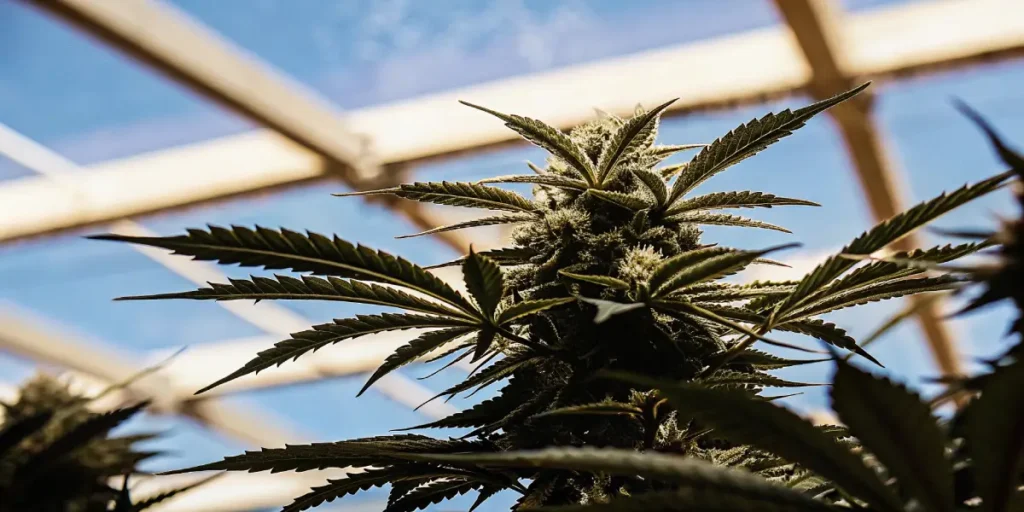
FAQs
What are biofertilizers?
Biofertilizers are natural fertilizers that contain living microorganisms. These microorganisms, such as bacteria and fungi, help promote plant growth by increasing the availability of nutrients in the soil. They are considered a sustainable alternative to chemical fertilizers, contributing to healthier and more productive cannabis plants.
When using biofertilizers in cannabis grows, they work by enhancing the natural processes in the soil. This not only improves nutrient uptake but also supports the overall health of the cannabis plants, leading to better growth and yields.
The use of biofertilizers aligns with sustainable cannabis growing practices, as they promote a natural nutrient cycle and reduce the carbon footprint of cultivation efforts. This makes them an ideal choice for eco-conscious growers looking to minimize their environmental impact.
Moreover, biofertilizers can be a key component in organic biofertilizers for cannabis cultivation strategies. They support organic certification efforts by providing a natural source of nutrients that align with organic farming guidelines.
How do biofertilizers benefit cannabis cultivation?
Biofertilizers offer several benefits for cannabis cultivation. They improve soil fertility, leading to healthier plants and better yields. By increasing the microbial activity in the soil, biofertilizers help plants access nutrients more efficiently.
Additionally, they contribute to sustainable cannabis growing by reducing the need for synthetic fertilizers. This minimizes environmental impact and supports a balanced ecosystem, making biofertilizers an excellent choice for eco-conscious growers.
Using biofertilizers in cannabis grows can also enhance the biological diversity in the soil. This diversity not only aids in nutrient cycling but also enhances soil structure, making it more conducive to root growth and water retention.
Furthermore, biofertilizers can help in managing soil salinity and pH levels, ensuring that cannabis plants have an optimal growing environment. This leads to improved plant health and maximizes the potential for high-quality, potent buds.
Can biofertilizers be used with all cannabis strains?
While biofertilizers can be used with most cannabis strains, some strains respond better than others. It’s important to choose strains with robust genetics that can thrive with natural nutrient sources. Strains like Critical Bilbo and Gelato Feminized are known to perform well with biofertilizers.
When selecting strains, consider their growth characteristics and nutrient requirements. Strains that are adaptable and resilient are often the best candidates for biofertilizer use.
The adaptability of a strain to organic biofertilizers for cannabis cultivation often depends on its genetic lineage. Strains with heritage in outdoor cultivation settings may exhibit better resilience when paired with biofertilizers.
Additionally, collaborating with reputable seed banks that provide detailed strain information can aid in selecting varieties that are most compatible with biofertilizer use, ensuring optimal growth and yield outcomes.
What is the best way to apply biofertilizers?
The best way to apply biofertilizers depends on your growing setup and the specific product you are using. Incorporating biofertilizers into the soil mix before planting is a common method. This allows the beneficial microbes to establish themselves early on.
Additional techniques include top-dressing and foliar application. For top-dressing, sprinkle the biofertilizer on the soil surface and gently work it in. For foliar application, dilute the biofertilizer in water and spray directly onto the leaves for quick nutrient absorption.
When implementing biofertilizer application techniques for cannabis plants, it is essential to adhere to recommended dosage guidelines to avoid over-application, which can disrupt the microbial balance in the soil.
Moreover, growers should pay attention to environmental conditions, such as temperature and humidity, which can affect the activity and effectiveness of biofertilizers. Optimal conditions can enhance microbial performance and plant uptake.
Are there any downsides to using biofertilizers in cannabis grows?
While biofertilizers offer many benefits, they do have some limitations. One potential downside is that their effects can be slower to manifest compared to chemical fertilizers. This means growers need to be patient and plan accordingly.
Another consideration is the need for proper storage and handling. Biofertilizers contain living organisms, so they must be stored in a way that maintains their viability. Following the manufacturer’s guidelines is crucial to ensure the best results.
Additionally, using biofertilizers in cannabis grows can require a learning curve for growers accustomed to synthetic fertilizers. Knowing the microbial interactions and how they influence plant growth is key to maximizing the benefits of biofertilizers.
Moreover, the effectiveness of biofertilizers can vary depending on soil conditions and the existing microbial population. Regular soil testing and monitoring can help growers make informed decisions about biofertilizer application and its impact on plant health.


